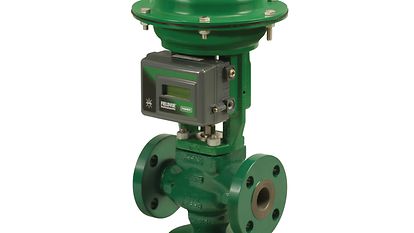Maximizing System Control with High-Performance Control Valves
Maximizing System Control with High-Performance Control Valves
Blog Article

Maximize Power Savings and Comfort With Advanced Structure Automation Controls
In the realm of contemporary design and center management, the combination of advanced structure automation regulates stands as a crucial improvement. By harnessing the power of automation, buildings can adjust, respond, and progress in means that were once unbelievable.
Energy Effectiveness Benefits
Energy effectiveness benefits can considerably lower energy intake and operational costs in buildings. Energy-efficient systems, such as advanced structure automation controls, can maximize the usage of sources like lights, home heating, and cooling, leading to reduced energy expenditures over time.
In addition, boosted energy efficiency can lengthen the life expectancy of building tools and systems. By running much more efficiently, HVAC systems, lighting fixtures, and various other structure elements experience less wear and tear, resulting in lowered upkeep and substitute prices. Additionally, energy-efficient buildings usually regulate higher residential property values and rental prices, providing long-term economic advantages to proprietors.
In addition, power effectiveness can enhance owner comfort and performance. Effectively managed indoor environments with optimal lights and thermal problems develop an even more favorable and positive work area, bring about enhanced worker satisfaction and performance. On the whole, the power efficiency benefits connected with innovative building automation controls are complex, including cost financial savings, environmental stewardship, and occupant well-being.
Improved Comfort Control
Enhancing comfort control in building atmospheres requires a sophisticated integration of innovative automation systems for optimum owner well-being. By using sophisticated building automation controls, facilities can customize the indoor atmosphere to satisfy the specific needs and choices of residents. control valves.
By including these advanced controls, structures can not just boost convenience yet also boost power effectiveness by optimizing system procedures based on real occupancy and usage patterns. Inevitably, prioritizing owner convenience via sophisticated automation systems leads to a more satisfying and healthier indoor atmosphere.
Operational Efficiency Improvements

Additionally, the execution of real-time surveillance and analytics devices makes it possible for building operators to identify energy inefficiencies and operational anomalies promptly. By continuously keeping track of energy use patterns and system performance metrics, modifications can be made in real-time to maximize power intake and ensure peak functional efficiency. control valves. Furthermore, integrating need action techniques right into building automation controls can even more enhance functional performance by dynamically changing power usage based upon grid conditions and rates signals
Indoor Climate Optimization
Effective interior climate optimization is an essential facet of building automation controls, ensuring passengers' convenience and well-being while taking full advantage of power savings. By using innovative sensors and controls, developing automation systems can continually check and adjust temperature level, moisture levels, air quality, and air flow this hyperlink to create an optimum indoor atmosphere. Keeping consistent and comfy problems not just enhances resident fulfillment yet additionally boosts performance and overall health.
Interior environment optimization also plays a vital function in power performance. By fine-tuning ventilation, heating, and air conditioning systems based upon real-time data and tenancy patterns, building automation controls can substantially reduce power intake - control valves. Implementing methods such as demand-controlled ventilation and thermal zoning can aid minimize power waste while making sure that each location of the building obtains the essential conditioning.

Lasting Atmosphere Development
Building automation regulates not just maximize interior environment problems for power performance and occupant comfort however additionally lay the foundation for producing a sustainable setting with critical management of sources and systems. By integrating advanced building automation innovations, such as click this site sensors, actuators, and smart software application, centers can adjust and keep an eye on power usage in real-time to lessen waste and reduce their carbon footprint. These systems enable predictive upkeep, determining potential issues prior to they escalate and optimizing equipment performance to improve durability and performance.
Furthermore, lasting environment creation prolongs past power management to incorporate water conservation, waste reduction, and indoor air top quality improvement. Building automation controls can control water use, identify leaks, and guarantee proper garbage disposal methods, adding to total sustainability efforts. Additionally, by keeping track of and managing air flow click here to read and filtration systems, these innovations enhance occupant health and wellness and efficiency while reducing energy usage connected with HVAC operations.
Conclusion
Finally, advanced building automation controls offer significant advantages in regards to energy savings, comfort control, functional effectiveness, interior environment optimization, and creating a sustainable atmosphere. By applying these controls, buildings can accomplish optimum performance while lowering energy consumption and boosting owner convenience. It is obvious that the use of advanced automation modern technology is critical in boosting building performance and developing a much more sustainable future.
Power performance advantages can significantly reduce power usage and functional expenses in buildings. Generally, the energy performance advantages associated with innovative building automation controls are complex, including cost financial savings, environmental stewardship, and occupant health.
Additionally, integrating demand feedback methods into structure automation controls can further improve functional effectiveness by dynamically readjusting energy use based on grid conditions and prices signals.
Building automation controls not just enhance indoor climate problems for energy efficiency and occupant convenience yet likewise lay the structure for creating a sustainable atmosphere through calculated administration of systems and resources.In final thought, advanced building automation controls offer significant advantages in terms of energy financial savings, convenience control, functional efficiency, indoor climate optimization, and creating a sustainable environment.
Report this page